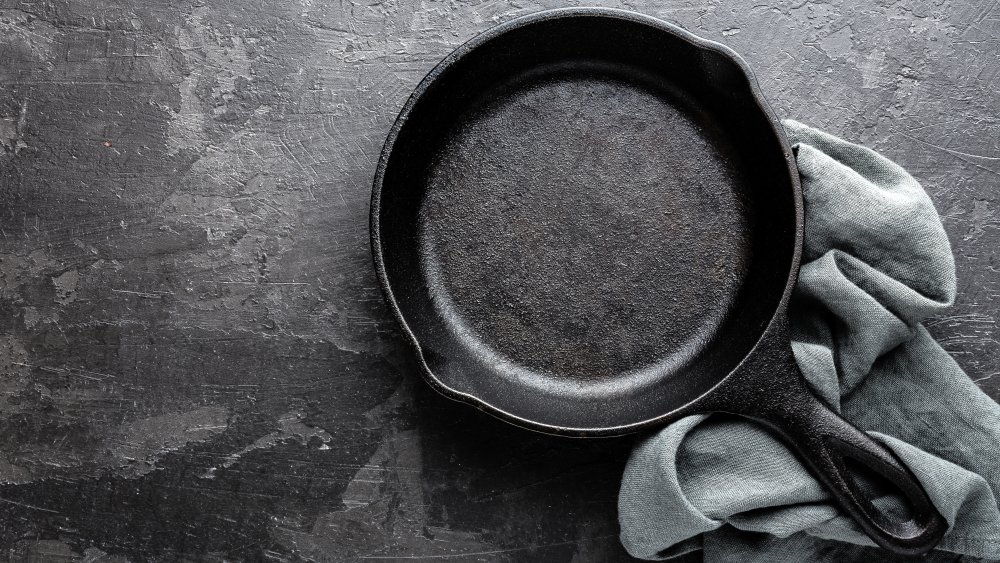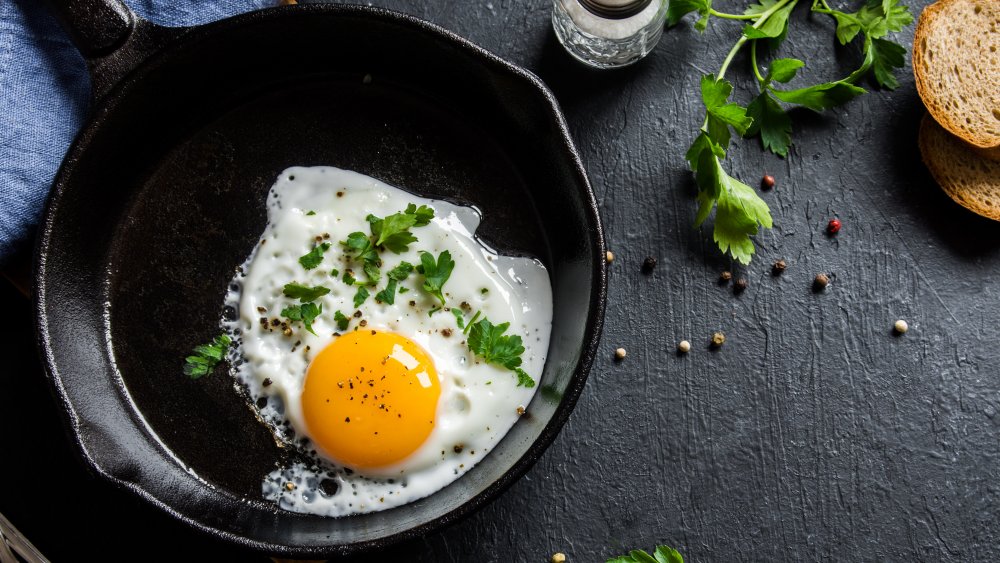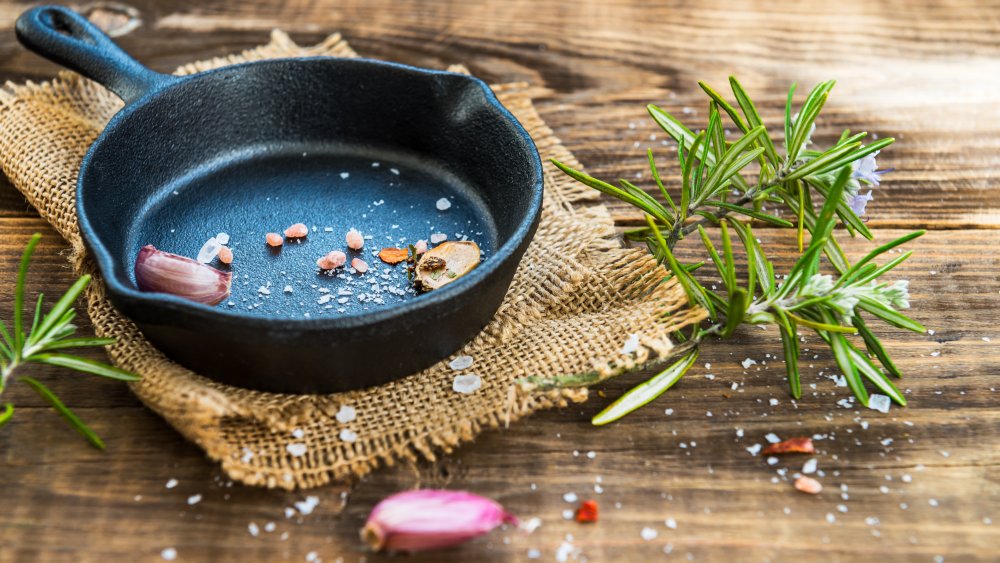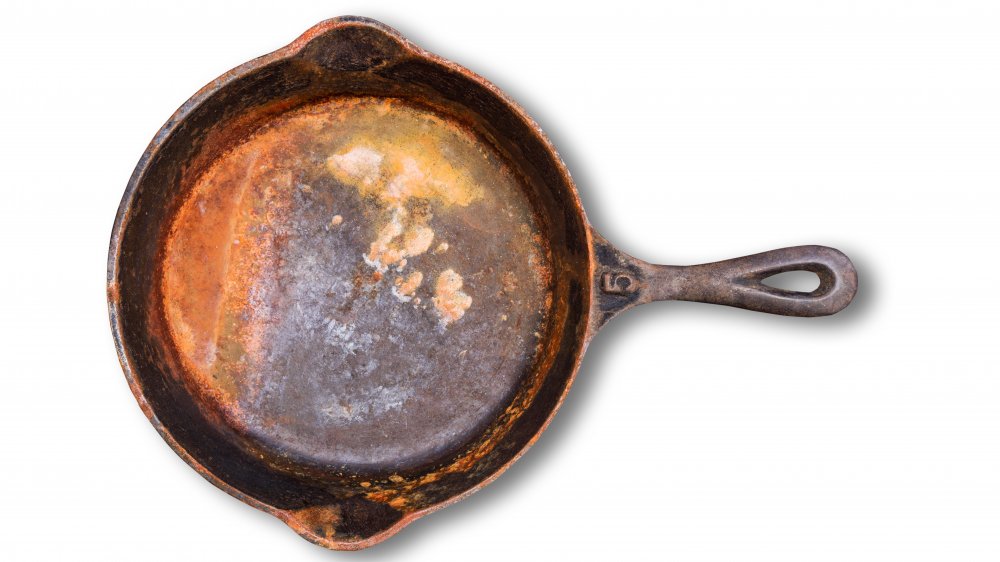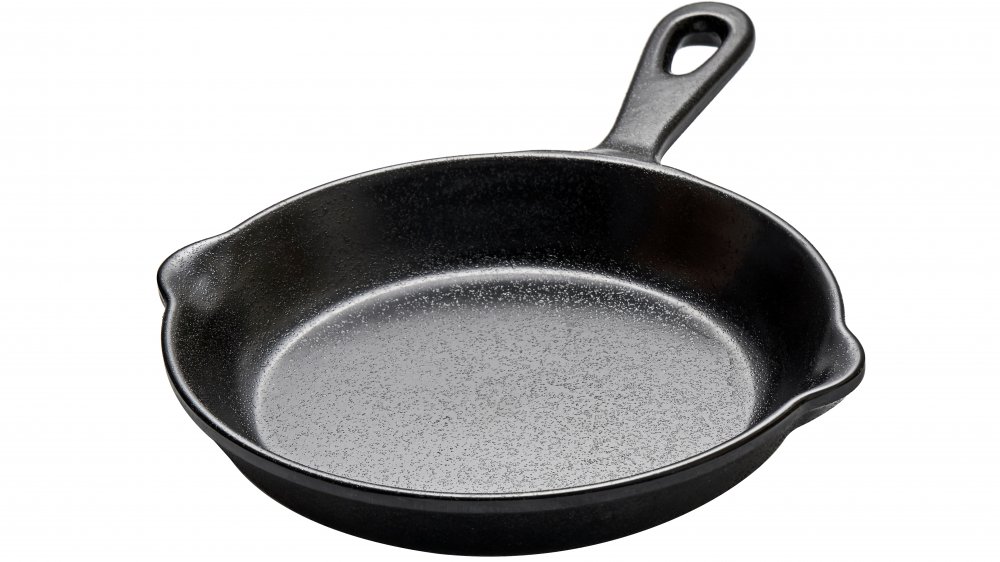Foods You Should Never Cook In A Cast Iron Skillet
Cast iron skillets are lauded by home cooks and chefs alike for their natural nonstick finish, ability to retain heat, and long life span, according to popular cookware brand Lodge. They describe cast iron as perfect for any skill level and incredibly versatile, but state that there are some types of food you should avoid if you want to keep your cast iron skillet in peak condition.
Southern Kitchen explains one reason for avoiding certain foods is that some react poorly with iron and can strip your seasoning (aka the nonstick finish) which leads to an off-putting metallic flavor. Another reason some foods are best cooked in a different pan is that they stick to cast iron, regardless of how well seasoned it is. Epicurious agrees, suggesting you stay away from acidic and flaky or sticky foods if you don't want to have to reseason your pan.
Avoid these foods if you want to keep your cast iron in top shape
Prevention praises cast iron as low maintenance, claiming the pans go easily from stovetop to oven and usually don't require any scrubbing to clean. They suggest there are really only five foods you should never cook in cast iron: tomatoes, wine braised meats, omelets, delicate fish, and desserts.
Tomatoes and wine braised meats should be avoided because they are acidic and do not react well to iron. These two are among the foods that can strip your seasoning and absorb that metallic flavor from the pan. Omelets and delicate fish fall into the stick-to-the-pan category, which can lead to you scraping up your seasoning while trying to get the stuck-on food off. Some people also end up resorting to soaking the pan in soapy water to try to remove the last bits of food, which can ruin the seasoning as well.
Desserts fall into a third category, and are a bit of a gray area. Their issue is not that you can't cook them in cast iron, but that cast iron pans gradually build up flavor from whatever you have cooked in them before. If you normally cook savory foods in your cast iron, you might find your brownie or pie has an odd taste. However, having one pan dedicated to sweets and another to savory foods will avoid this issue if you love cast iron-baked desserts.
You might want to stay away from stinky foods, too
Taste of Home asserts you also may want to avoid cooking overly smelly foods in your cast iron, like garlic, stinky cheeses, or peppers. These foods can leave overpowering flavors that will affect the next food you cook more intensely than from normal use. If you absolutely must cook something delicately flavored in your cast iron directly after a stronger food, you can bake your skillet for 10 minutes at 400 degrees to get rid of the smell.
Cook's Illustrated claims that heating your pan for 15 minutes over a medium flame, like the ones found on a grill or stove-top, should be enough to deodorize your cast iron as well. They do state that they prefer the oven method for deodorizing described by Taste of Home over the stove-top method, as it is quicker and will prevent your kitchen from smelling as strongly of whatever flavor you are trying to eliminate.
A scratched or rusted cast iron skillet can be fixed
Let's say you made a mistake and scratched or stripped your cast iron skillet of its seasoning with acidic food, now what? Well, fear not, you don't have to throw the pan out with the flaky fish, so to speak. According to Serious Eats, if your cast iron is in need of a total overhaul you will first need to strip the seasoning. They suggest using a lye based oven cleaner, like Easy-Off, to clean your pan. You can simply cover the pan with the cleaner, and leave it sealed in a thick plastic bag for 24 hours. After your cast iron is done soaking, you will need to use a heavy duty scrubber to get the skillet down to its original surface, which you will be able to tell from its gunmetal gray color. The downside to this method is that you may have to repeat these two steps multiple times before you get down to the base.
Once you have fully stripped your skillet, you will need to remove any rust, which can be easily done with plain old white vinegar. If you like, you can soak your pan for six to 12 hours and then scrub, but Serious Eats cautions that soaking for too long (like 24 hours) can cause irreparable damage. Once you have finished the vinegar soak, be ready to reseason your cast iron immediately, as the base metal will quickly start to rust.
Reseason your cast iron so it looks like new
Reseasoning your cast iron is actually pretty easy, according to The Kitchn. All you need is some vegetable oil, a clean cloth or paper towel, and aluminum foil. First, preheat your oven to 350 degrees. You'll want to give your skillet an even, thorough coat of oil, which you do by pouring a tablespoon or two into the center of your skillet and spreading it around with a cloth. Make sure to include the bottom and sides of your pan, as you want your entire skillet to be seasoned and sealed. Once you have your cast iron fully covered, place your skillet upside down in the oven, with a sheet of aluminum foil under it to catch any oil drips. Let your cast iron bake for at least an hour, and then turn off the oven and allow your pan cool completely inside. The Kitchn recommends resealing (without stripping) every so often, when you notice that your pan has become dull or food begins to stick to the surface.
